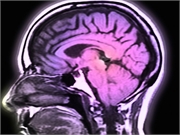Study Might Point Alzheimer's Research in Whole New Direction
By Dennis ThompsonHealthDay Reporter

THURSDAY, Jan. 2, 2020 (HealthDay News) -- A new brain scanning technique is shaking up what researchers thought they knew about Alzheimer's disease.
Researchers now say they can predict with reasonable accuracy which brain regions will wither and atrophy in Alzheimer's by identifying the places where tau protein "tangles" have built up.
"You could really predict which brain regions were going to get damaged just on the basis of the tau scans we took at the beginning of the study," said lead researcher Renaud La Joie, a postdoctoral fellow at the University of California, San Francisco, Weill Institute for Neurosciences. "Where the tau was built up at the beginning of the study was very predictive of where the actual brain shrinkage was going to happen in the next year or two."
These findings support the growing contention that toxic tau proteins drive brain degeneration in Alzheimer's more directly than the disease's other hallmark, amyloid protein plaques, the study authors said.
The scans also could allow doctors to predict how Alzheimer's will affect individual patients, by tracking which brain regions have more accumulated tau tangles, La Joie said.
"If you use tau scans in this group of patients with Alzheimer's disease, it might actually help you have very precise expectations and very precise measures of what's going to happen to the patient," he said.
For example, doctors might be able to predict which patients will suffer memory problems and which will suffer language problems.
Brains afflicted with Alzheimer's tend to develop toxic plaques made of amyloid protein and toxic tangles made of tau protein, said Rebecca Edelmayer, director of scientific engagement at the Alzheimer's Association. Those misfolded protein clusters, along with the shrinkage of different parts of the brain, are the telltale changes as the disease progresses.
Research first focused on the amyloid plaques as a potential driver of Alzheimer's, but drugs that target them have not proven effective in treating the disease.
The so-called "amyloid theory" took another hit earlier this week, when a study in the journal Neurology concluded that early declines in memory and thinking among Alzheimer's patients tend to occur before amyloid plaques appear in the brain, not after.
La Joie's team decided to use advanced positron emission tomography (PET) imaging techniques to investigate tau tangles, the other great suspect in Alzheimer's.
Scientists recently developed an injectable molecular "dye" that binds to tau tangles in the brain and emits a mild radioactive signal that can be picked up by PET scans.
"We now have tools to visualize these abnormal proteins in the brains of living patients," La Joie said. "That's exciting because for almost a century, we could only visualize them at autopsy."
The research team recruited 32 patients with early Alzheimer's and used PET scans to measure the amyloid plaques and tau tangles in their brains. The patients also underwent MRI scans to measure the structure of their brain.
The investigators found that the tau levels detected in participants' brains at the start of the study predicted how much degeneration would occur within a year or two.
Further, the location of tau buildup predicted which brain regions would atrophy with more than 40% accuracy, the researchers said. On the other hand, amyloid PET scans could only predict about 3% of future brain degeneration.
"Where this abnormal tau builds up, it's evidence that something is starting to go wrong in this brain region," La Joie said. "Amyloid is very diffuse in the brain. Most patients have amyloid all over the place, including in areas that remain at least healthy-looking and don't degenerate until very late in the disease."
The results provide hope that new drugs that target tau tangles will be able to help Alzheimer's patients, the study authors said.
Edelmayer said it's too soon, however, to completely discount amyloid plaques as a potential driver of Alzheimer's.
But she added that the new study is "helping to better elucidate an understanding of those changes that are occurring in the brain and at what point they are happening, so we can better predict disease progression and also use it as a way to develop new therapeutics."
Edelmayer noted that these are the first steps that will be necessary to create a precision medicine approach to treating individual patients.
The new study was published in the Jan. 1 issue of the journal Science Translational Medicine.
More information
The U.S. National Institute on Aging has more about brain changes in Alzheimer's.

The news stories provided in Health News and our Health-E News Newsletter are a service of the nationally syndicated HealthDay® news and information company. Stories refer to national trends and breaking health news, and are not necessarily indicative of or always supported by our facility and providers. This information is provided for informational and educational purposes only, and is not intended to be a substitute for medical advice, diagnosis, or treatment.

